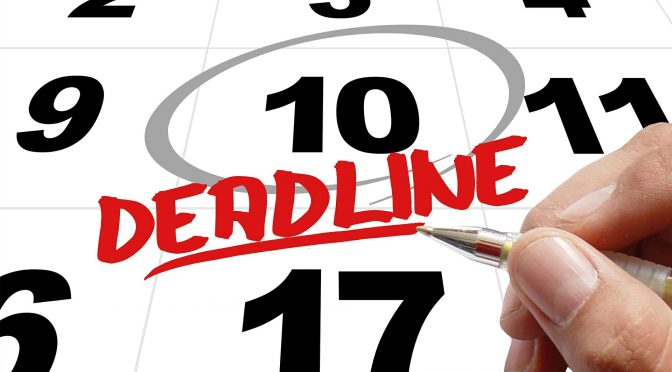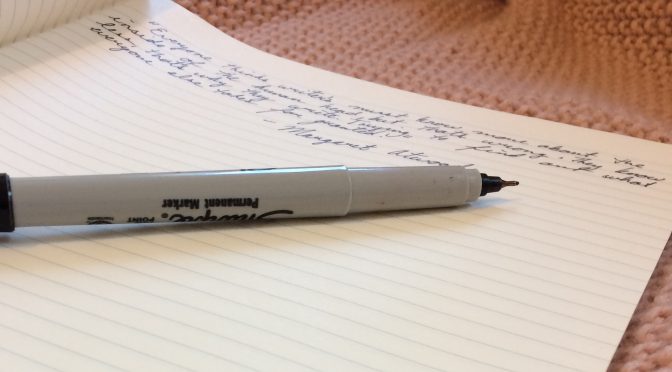The image used here is released under Creative Commons CC0.
Writing an F award application is kind of like a jigsaw puzzle. There are lots of pieces, they all need to fit together just so, and it feels like it will never be complete. But writing – whether it be manuscripts, reports, or grant proposals – is a huge part of any scientist’s career, and it shouldn’t be an unpleasant process. F awards, which provide a stipend, health fees, tuition, and travel, are a great first step into the world of scientific writing.
There are a few oft-repeated adages that are thrown around when it comes to grant proposals, such as “Make your aims related, but independent” and “You need to study a little bit of a mechanism.” While these are helpful in their own way, here are some other tips to make applying for your first F award a bit smoother:
- Take advantage of info sessions
Sackler offers two information sessions every year for potential F30 (M.D./Ph.D.) and F31 (Ph.D.) applicants. If you have questions about when to apply, writing, or anything else, this is the place to ask them. An additional day-long workshop is being held for the first time this year, hosted by Dean Dan Jay.
The Application – June 5th, 2 – 3:30 PM
Demystifying the Review Process – June 7th, 2 – 3:30 PM
*Writing Your Specific Aims – June 15th
*Attendance at the first two session is required for this workshop. Attendance will be limited to 20 participants.
- Make a list
There are several pieces to this application – so many that it’s possible for some of them to fall through the cracks. A checklist is a simple way to ensure you won’t need to rush to complete a document (or worse, start writing it!) minutes before the deadline. The following list is accurate as of Spring 2018:
- Abstract/Project SummaryApplicant’s Background and Goals for Fellowship Training
- Bibliography and References Cited
- BioSketch
- Cover Letter
- Equipment
- Facilities and Other Resources
- Institutional Commitment
- Letters of Support
- Project Narrative
- Research Strategy
- Resource Sharing Plan
- Respective Contributions
- Responsible Conduct of Research
- Selection of Sponsor and Institution
- Specific Aims
- Sponsor Information
- Sponsor’s BioSketch
- Vertebrate Animals
If you’re resubmitting your application, you’ll also need to include an “Introduction,” a one-page document where you respond to the criticisms of each reviewer.
- Gather preliminary data
To the bench! With data in hand, you can work with your advisor to determine what kind of story you want to tell. Your goal here will be to gather data that will demonstrate the feasibility of your proposal. Starting early is key, as this process can take several months. The more data you have, the better. It shows the reviewers that you can work hard and be productive.
- A picture is worth a thousand words
Begin crafting your figures before writing. Figures are a visual representation of your story; having it effectively “storyboarded” out makes it easy to see where there are holes in your data. Patching these now makes for a much stronger initial application.
- Make your Aims into an outline
Your Specific Aims page functions as an overall summary of your proposal. While your reviewers must read the whole proposal, you should assume that most other panel members will only scan this section. All of the critical aspects of your proposal should be clearly stated here, including the impact and novelty of your research.
- Stagger writing with editing
Once you write your initial aims, send it to your advisor for comments and get started on the next piece of your application. As your advisor returns documents with comments, you can edit and send them back. A continuous cycle of writing, editing, and rewriting keeps the process moving and keeps you from working on the same document for too long. You’re more likely to catch typos and other errors by looking every so often with fresh eyes.
- Play the matching game
Consistency is huge in any F award application. You will reference your aims multiple times in the Research Strategy section. As you craft your proposal, make sure that the methods listed under each aim match in the Research Strategy and Specific Aims sections.
- Ctrl-F for key words
There are certain core concepts that, when missing, are easy for reviewers to point out as a flaw. Your application should not only comment on the novelty and innovation of your proposed research, but also include key phrases such as “sex as a biological variable.” Reviewers may simply search for these terms to see if you address them, so you should do it, too. Talk to your advisor for some examples. As someone who writes and reviews grants, they will know exactly what they would look for in a proposal.
- Skip the jargon
Not every reviewer you have will be an expert in your field. In fact, it’s likely that none of them will be familiar with your precise topic of interest. If a simple word will do the job, use the simple word. The less reviewers have to think about what you’re trying to say, the better they will feel about your proposal.
Easier said than done, right? Don’t be discouraged if your proposal isn’t funded in its initial submission. Only about 13% of applications are at Sackler. However, making the strongest proposal you can initially will make it easier to edit for resubmission, and much more likely to be funded the second time around. Over the last five years, Sackler applicants have had a 30% success rate (this number includes both proposals funded initially and those funded after resubmission). For a breakdown of success rates by NIH institute, check out the following link: https://report.nih.gov/success_rates/. The F30/F31 spreadsheet is #3 under “Training and Research Career Development Programs.”
Finally, take a break once you’ve submitted the proposal! Rest and recharge before returning to the bench so you can get ahead on your next project.
Sources and Related Reading:
- NIH. Write Your Application. Last updated: 2016 Jan 28 [cited 2018 May 17]. Available from: https://grants.nih.gov/grants/how-to-apply-application-guide/format-and-write/write-your-application.htm
- Chasan-Taber L. 10 Tips for Successful Grant Writing. The Chronicle of Higher Education. 2018 Feb [cited 2018 May 17]. Available from: https://www.chronicle.com/article/10-Tips-for-Successful-Grant/242535
- McCollum, L. To Resubmit or Not To Resubmit? GradHacker. 2015 Feb [cited 2018 May 17]. Available from: https://www.insidehighered.com/blogs/gradhacker/resubmit-or-not-resubmit
- Hollenbach, AD. A Practical Guide to Writing a Ruth L. Kirschstein NRSA Grant. 1st ed. Oxford: Academic Press; 2014.
• This resource is available from Hirsh Health Sciences Library.


